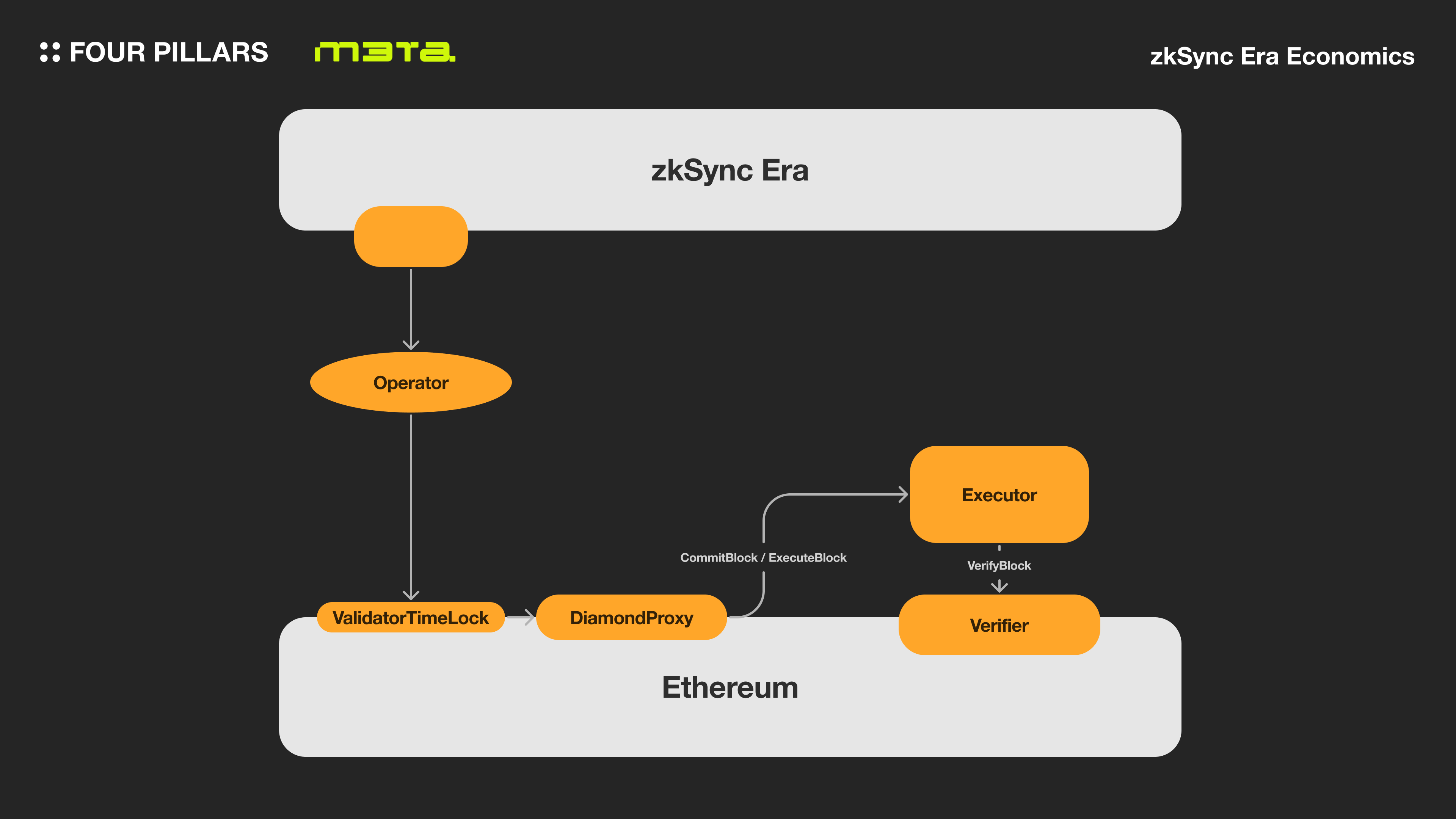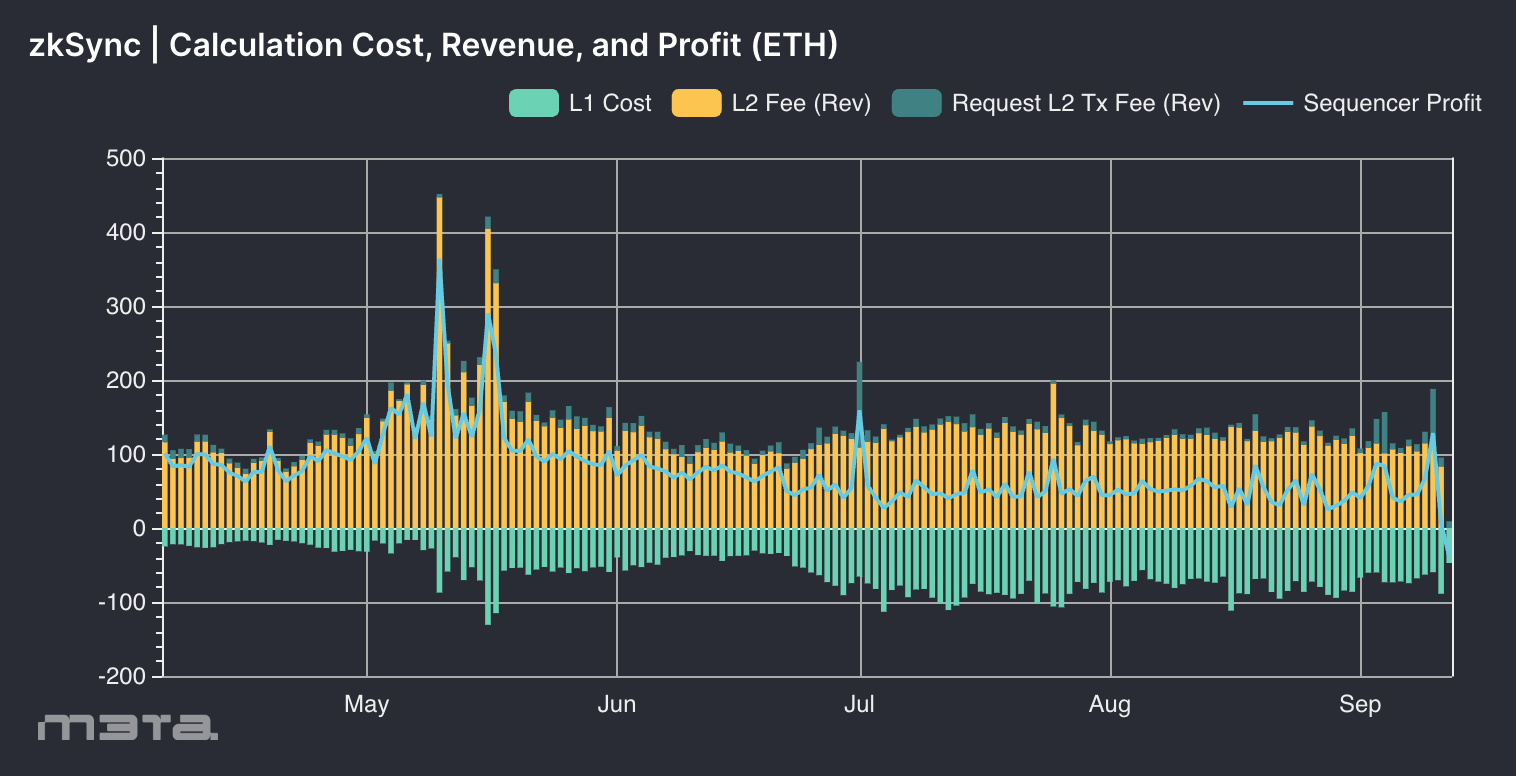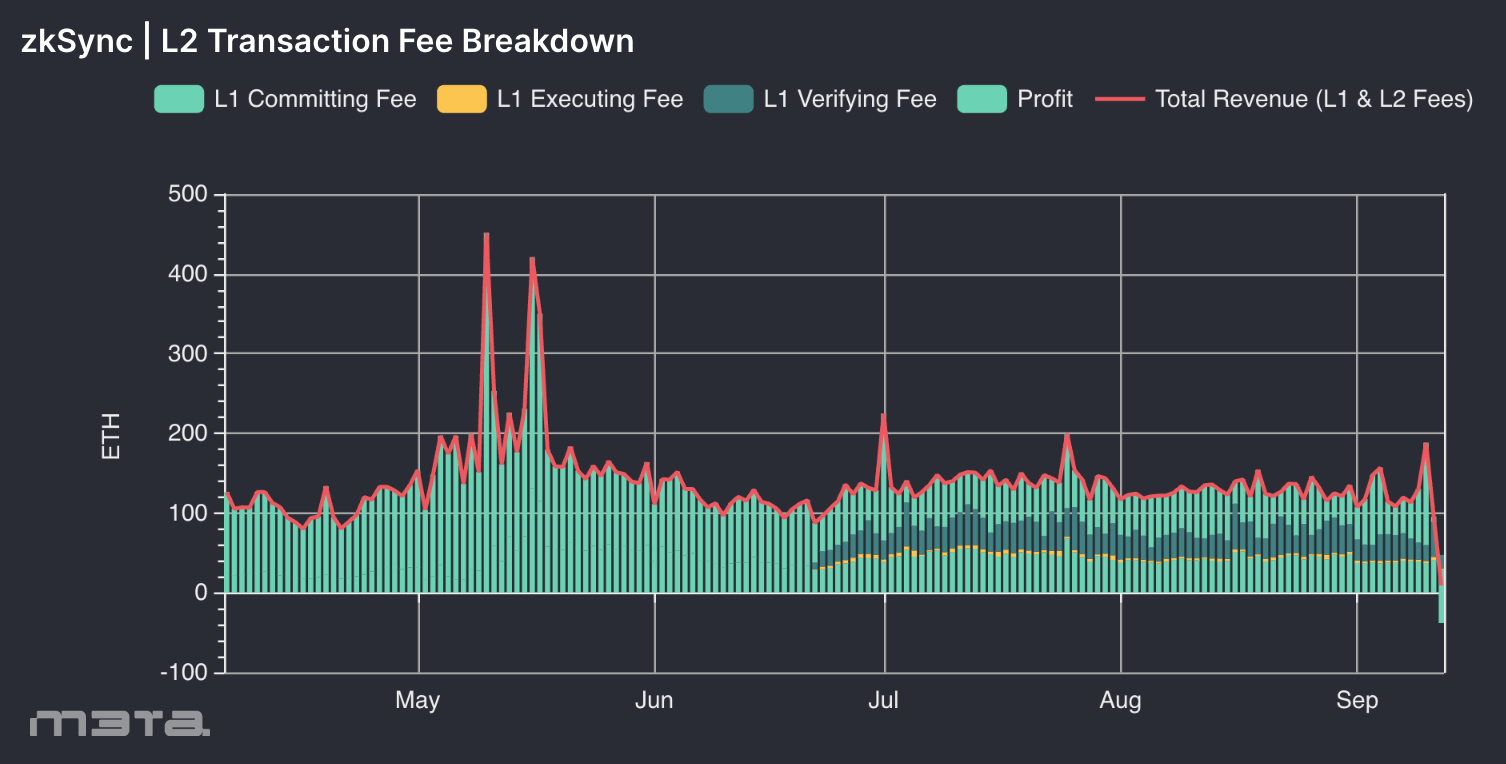zkSync Era
Key Takeaways
- zkSync Era uses Rollups to increase Ethereum scalability by consolidating transactions off-chain and sending them to the main chain in a single batch via a cryptographic proof of validity.
- The platform generates revenue through user transaction fees, which is similar to how Ethereum generates revenue.
- L2 Fee Revenue and profit from L1 Tx for L2 Tx initiation are sources of revenue, while L1 Contract Operation Cost is a cost.
- The cumulative profits and transaction fee breakdown are analyzed in the report by Modular Economics.
1. Overview

In the zkSync Era, Rollups are used to increase Ethereum scalability by consolidating transactions off-chain and sending them to the main chain in a single batch via a cryptographic proof of validity. The platform aims to preserve Ethereum's values of freedom, self-sovereignty, and decentralization at scale. Additionally, zkSync rollups are cost-efficient for most transactions compared to other scaling solutions.
The operator in zkSync Era executes the transactions and generates a zk proof. These are stored at L1.
Learn More about the architecture at “Architecture of zkSync Era”
2. Economics

In terms of economics, zkSync Era generates revenue through user transaction fees, which is similar to how Ethereum generates revenue.
2.1 Revenue & Cost (On-Chain)

Source: Modular Economics | M3TA
2.1.1 Revenue
- L2 Fee Revenue: revenue generated from transactions in L2
- Profit from L1 Tx for L2 Tx initiation: Users in L1 initiate transactions to be included in a queue where the transactions wait to be initiated in L2. Users pay a fee for inclusion and execution, which is calculated as revenue. However, the cost of initiating transactions in L2 is excluded from the calculation to determine profit.
2.1.2 Cost
- L1 Contract Operation Cost
- commitBlock: checks the L2 block timestamp, processes the L2 logs, saves data for a block, and prepares data for the zk-proof.
- proveBlock: validates the zk-proof.
- executeBlock: finalizes the state, marks L1 -> L2 communication processing, and saves the Merkle tree with L2 logs.
2.1.3 Asset
2.2 Revenue & Cost (Off-Chain)
2.2.1 Revenue
2.2.2 Cost
- Operator cost: Since a single operator wholly does the computation, the computing cost is incurred.
3. Analysis
3.1 Cumulative Profits

Source: Modular Economics | M3TA
3.2 Transaction Fee Breakdown

Source: Modular Economics | M3TA
